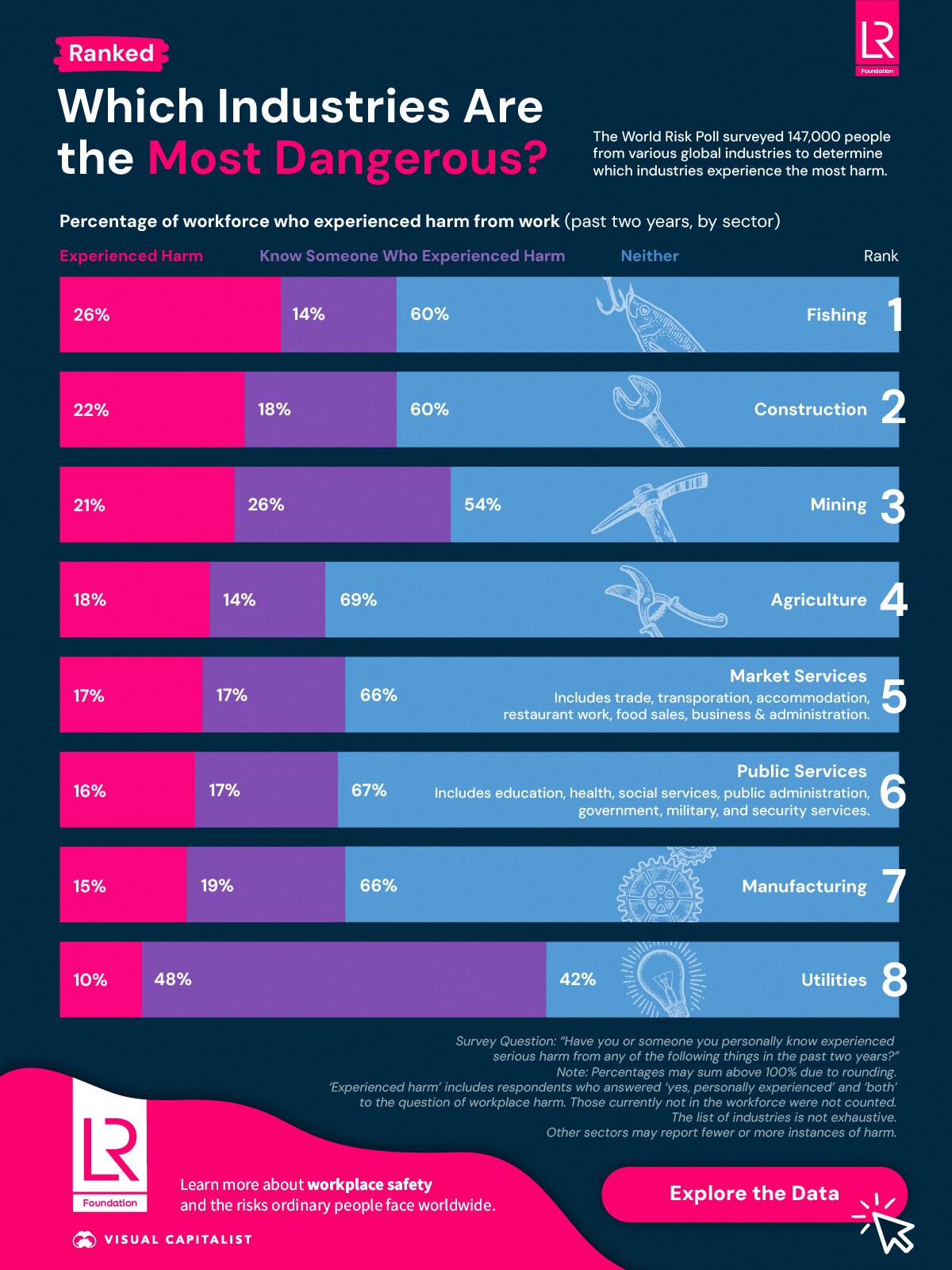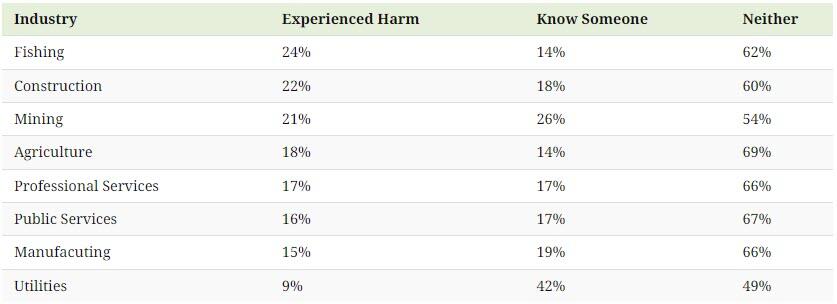Which Industries Are The Most Dangerous?
Workplace safety is critical. But did you know that almost one in three workers have experienced or know someone who has experienced severe harm as a consequence of their work in the last two years?
For this graphic, Visual Capitalist has partnered with Lloyd’s Register Foundation to explore the landscape of workplace safety and determine which industry is the most dangerous.
Evaluating Workplace Safety Challenges
Safety at work is challenging to evaluate as every industry has its oversight mechanisms, and every nation has its own legislation that influences how each industry functions.
So, sidestepping this challenge, Lloyd’s Register Foundation chose to evaluate workplace safety by going directly to the workers, asking 147,000 people from 142 nations whether they or someone they know had experienced harm in the last two years.
Here is what they found, broken down by industry:
The Importance of Training
The industries that produce the most harm are invariably manual industries, such as fishing, agriculture, and mining, where people use dangerous equipment daily.
However, training could also significantly contribute to an industry’s workplace safety. The World Risk Poll also evaluated the number of people who received training in their respective industries.
They found that three of the top four industries where respondents reported the most harm (agriculture, fishing, and construction) also appeared in the top four industries where the fewest instances of safety training were reported.
Making Work a Safer Place
Being safe at work is critical to a healthy work-life balance. Understanding workplace safety and the harm people face in each industry is essential when deciding on economic policy or researching an industry’s health.
Are you interested in learning more about the safety challenges faced by ordinary people all over the globe?
The World Risk Poll covers more than just workplace safety challenges. It explores many risks, from perceptions of climate change to how long people can survive without employment.
NEVER MISS THE NEWS THAT MATTERS MOST
ZEROHEDGE DIRECTLY TO YOUR INBOX
Receive a daily recap featuring a curated list of must-read stories.





